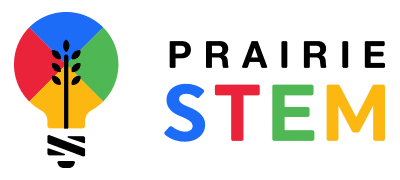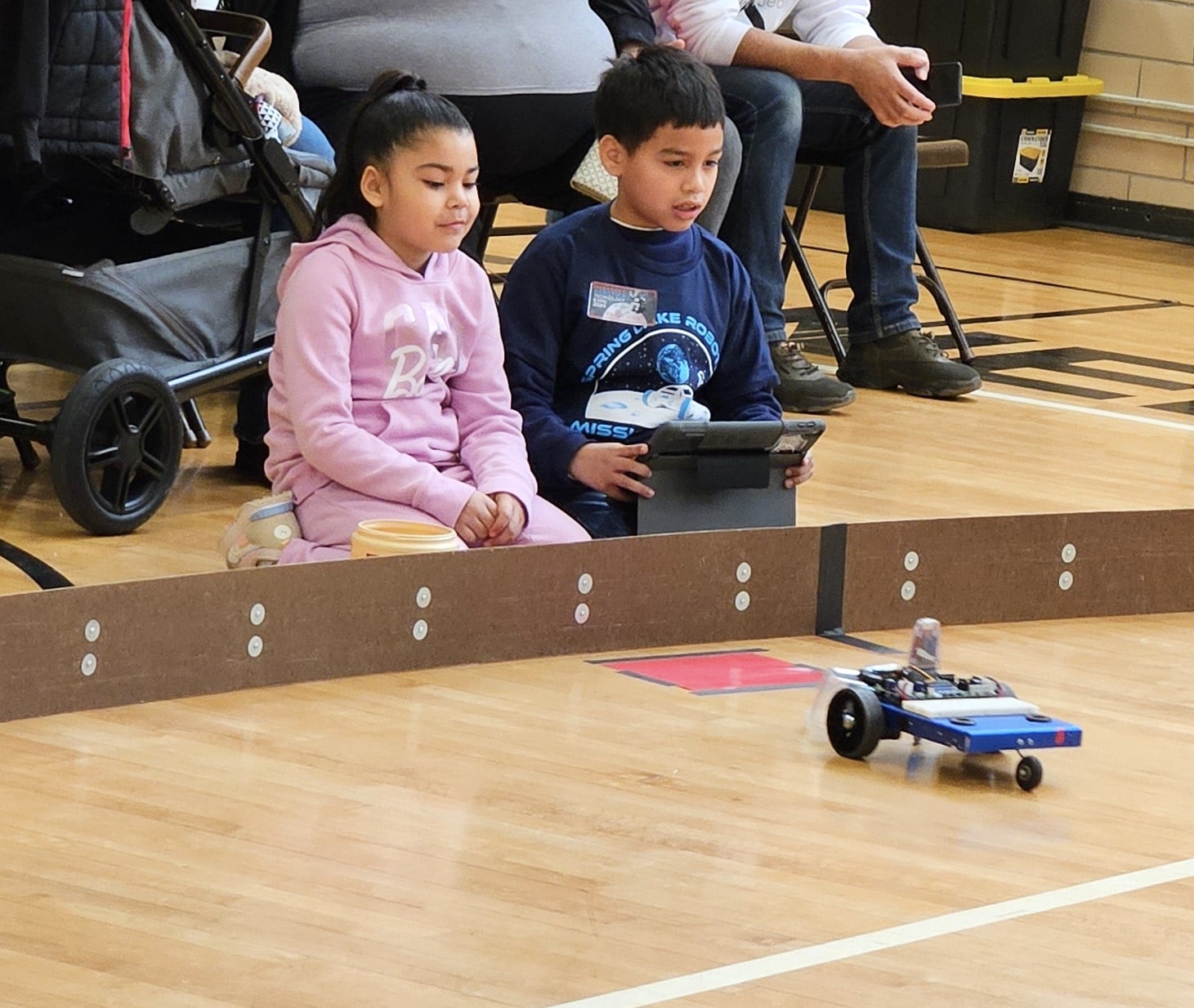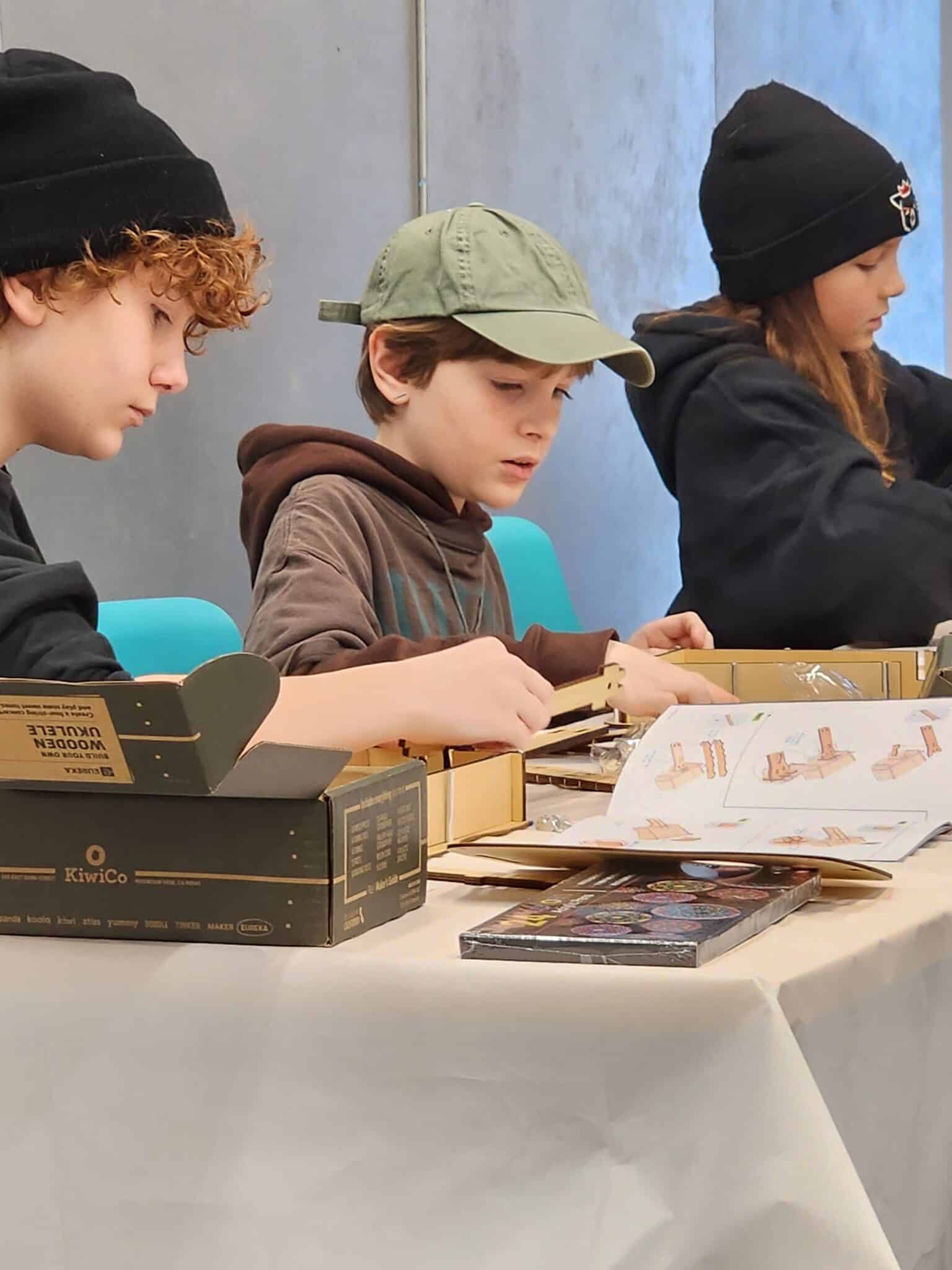Prairie STEM Fall Homeschool Series will occur on Tuesdays and Thursdays in our classrooms at The Mastercraft Building, 1111 N 13th St. Suite 307, Omaha, NE.
Register at: https://prairiestem.mycheddarup.com
Tuesday:
Sept 7, 14, 21, 28, Oct 5, 12, 19, 26, Nov 2, 9, 16
9:00 – 10:30 am – Physics ages 3-5 (PreK)
11:00 – 12:30 pm – Earth Science ages 4-6 (K-2)
1:00 – 2:30 pm – Space Science ages 7-10 (3-5)
9:00 – 11:00 am – Coding ages 10-14 (5-8)
12:00 – 2:00 pm – Robotics ages 8-14 (4-8)
Thursday:
Sept 9, 16, 23, 30, Oct 7, 14, 21, 28, Nov 4, 11, 18
9:00 -10:30 am – Earth Systems 7-10 (3-5)
11:00 – 12:30 pm – Energy ages 11-14 (6-8)
1:00 – 2:30 pm – Ecosystems ages 4-6 (K-2)
9:00 – 11:00 am – Engineering 8-14 (4-8)
12:00 – 2:00 pm – Beginners Art ages 10+ (5-12)
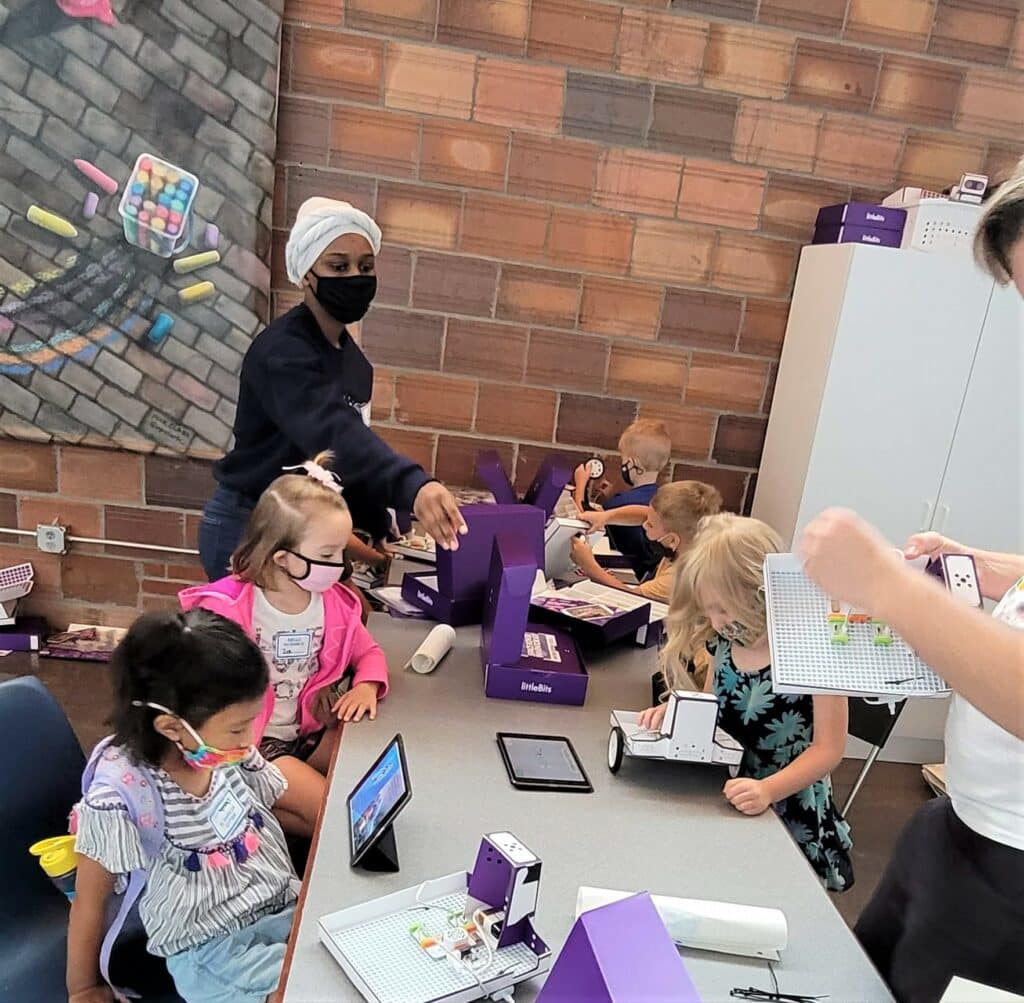
Physics – ages 3-5 (preK-K)
Students will learn about forces, motion, ramps, swings, and reactions. During this course, students will demonstrate the laws of motion, conduct hands-on physics experiments. Each session students will rotate between lesson, creative project, and body movement.
An example of a class: explain Newton’s 1st Law, observe 1st law in motion with Newton’s cradle, GoNoodle body movement (relate to fitness and health), science experiment with items at rest and items in motion, visit the green space, art project painting with cars in motion.
Earth Science – ages 4-6 (K-2)
Students will learn about landforms, how they are shaped and what influences them. During this course, students will conduct experiments and create models to demonstrate the types of land, bodies of water, and where they are located on the Earth’s surface.
An example of a class: explain what an aquifer is, experiment with creating a model aquifer. GoNoodle gets up and lets the energy flow out, learn about the Ogallala Aquifer and what it means to Nebraska, experiment showing why we need to keep the aquifer clean and create a collage of the Ogallala Aquifer means to Nebraska.
Ecosystems – ages 4-6 (K-2)
Students will learn the interdependent relationships in ecosystems. During this course, students will conduct experiments, create models, and use observations to understand the animal, plant, and human needs, their impact on their environment, interactions, and behavior.
An example of a class: learn about the plants, animals, and predators found on a coral reef. GoNoodle Baby Shark. Explain the food chain on the coral reef and how plastic plays a role. Experiment with bioaccumulation of microplastic in sea life that ultimately ends up in humans. Design a device to reduce plastic contamination.
Earth Systems – ages 7-10 (3-5)
Students will learn about weathering and erosion, identify patterns in rock formations and fossils in rock layers. During the course, students will develop a model of the geosphere, biosphere, hydrosphere, and/or atmosphere. Define a simple problem and design solutions by applying scientific ideas about conservation.
An example of a class: learn about riverbank erosion, create a model river bank and note the changes that occur when water passes by. Body Movement break. Explore how river bank erosion affects Nebraska and what precautions are in place to reduce or prevent erosion. The mock town is endangered, create a plan and or device to reduce or eliminate erosion of the town’s riverbank.
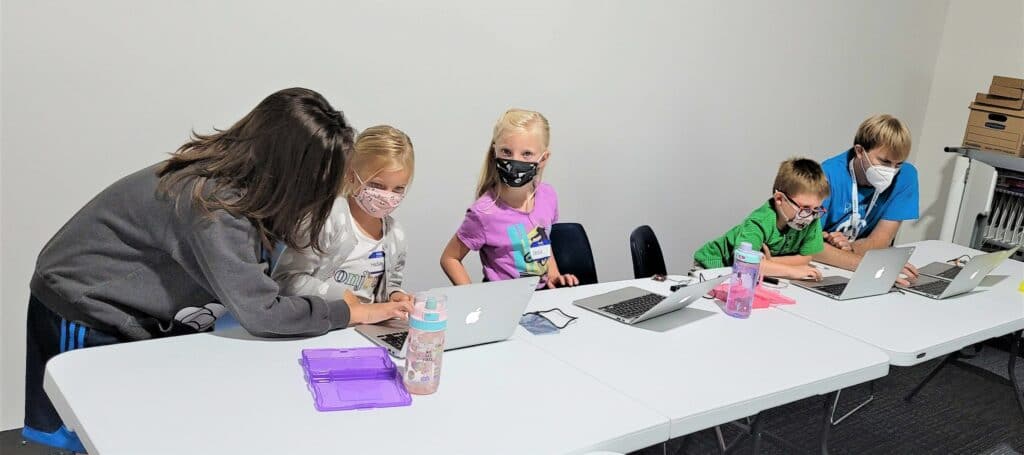
Space Science – ages 7-10 (3-5)
Students will explore Earth’s stars and the solar system. During this course, students will explore the daily changes in the length and direction of shadows, day and night, and the seasonal appearance of some stars in the night sky.
An example of a class: learn what constellations are and why they change seasonally. Create a star wheel and learn how to use it. Body Movement break. Explore the mythology behind the names of the stars, learn how stars are named today. Create a new constellation, design folklore and image to go with it.
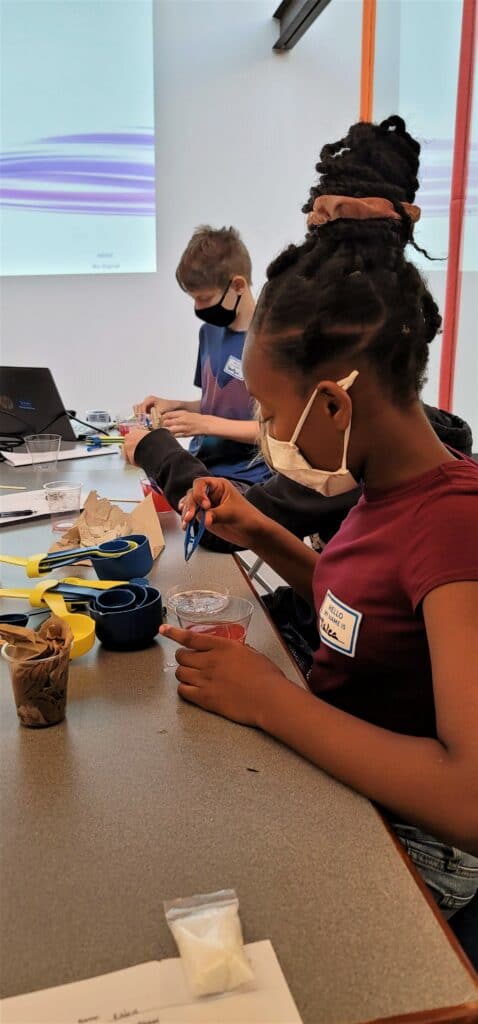
Energy – ages 11-14 (6-8)
Students will learn about different types of energy, engineer and test a device that transfers energy. Through experiments, students will understand relationships among transferred energy.
An example of a class: learn about light energy, how it behaves, how it’s measured. Explore refraction and reflection. Create a spectroscope. Mindfulness break. Examine the legend of Archimedes Light Death Ray, experiment to determine if it was possible.
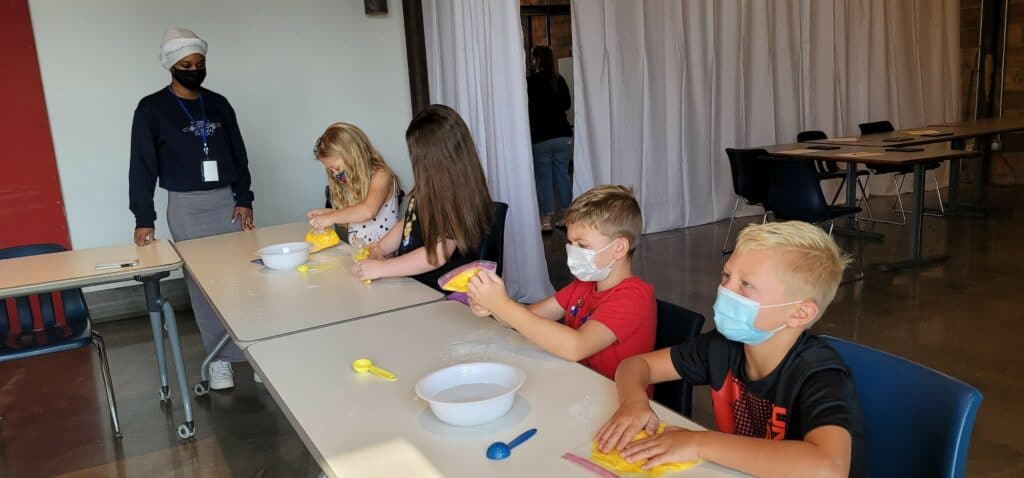
Engineering – ages 8-14 (4-8)
Students will learn about engineering and how all areas of STEAM (Science, Technology, Engineering, Art, and Math) are used together in engineering. During the course, students will learn about the Engineering Design Processes.
An example of a class: learn about impenetrable fortresses. Materials are limited using engineering knowledge design and engineer an impenetrable fortress that will be tested in a later class.
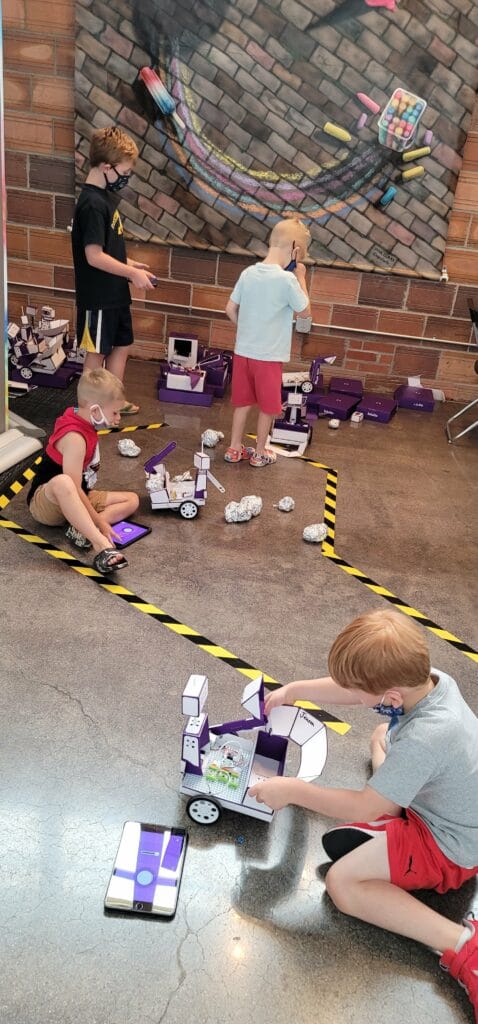
Robotics – ages 8-14 (4-8)
Students will build and operate a variety of robots. During the course, students will learn the laws of robotics, components of robots, and how robotics are used in everyday life.
An example of a class: learn what a STEMBoT is and how to properly handle one, maneuver through the obstacle course, driving over ramps and through different terrain becoming proficient in driving before unlocking challenges.
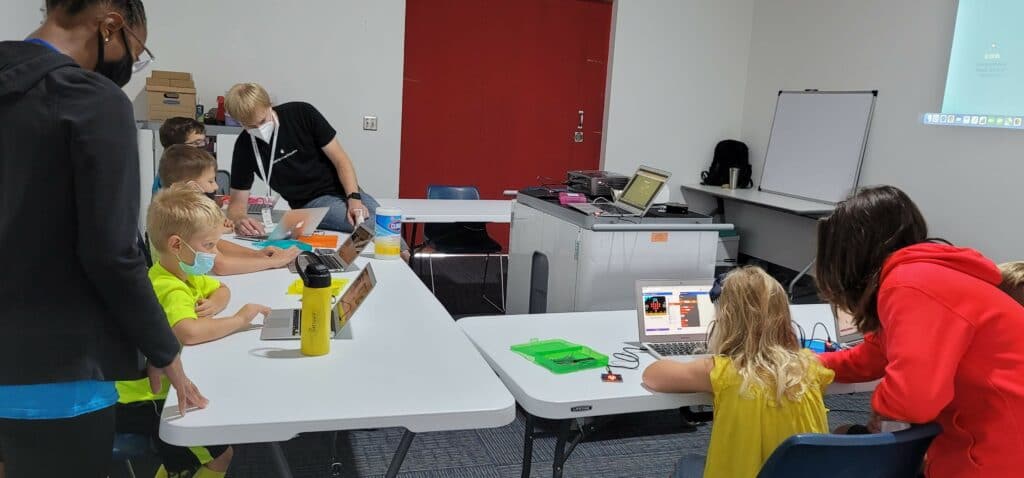
Coding – ages 10-14 (5-8)
Students will learn how to code using a variety of platforms. During the course, students will code MicroBits and STEMBoT robots. No coding experience is required. Lessons can be adjusted based on students’ coding abilities.
An example of a class: learn how to use CEENBot Commander to code a STEMBoT the same type of robot that Engineering students at UNL utilize, explore the degrees of rotation for each wheel and how the code represents it. Write different programs to get your bot through the maze.
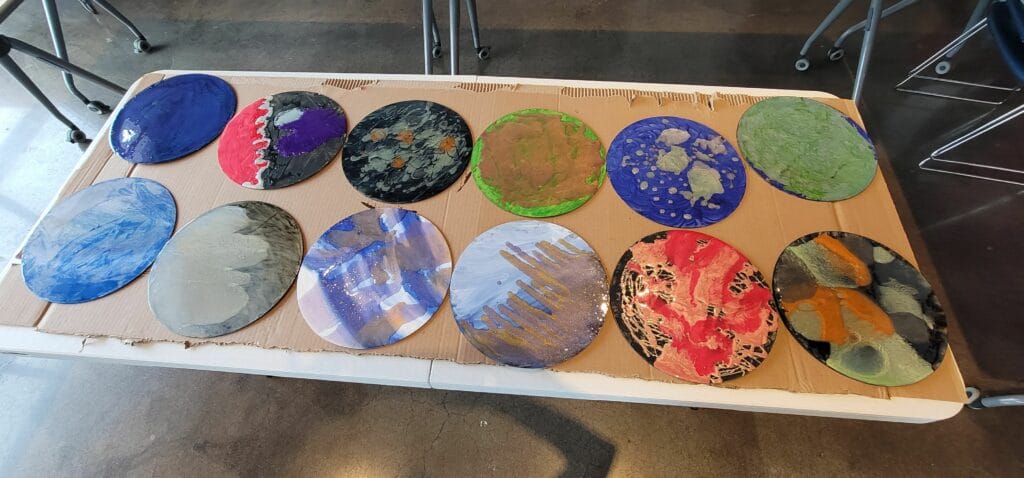
Beginners Art – ages 10+
Students will be introduced to a variety of art techniques. During the course, they will learn how to sketch (still life, nature, perspective), paint (watercolors and acrylic pour), and use mixed media to create works of art.
An example of a class: learn about shadows and techniques used to create shadows. Observe still life and how the shadows fall around it. Using different mediums such as pencils and Conte crayons sketch the still life and add shadows using the variety of methods learned.
Volunteer Opportunity: Volunteers assist the students in the classroom, volunteers are never left unattended with students. For more information please contact Jen.Miller@PrairieSTEM.org
Health and Safety: Our goal is to provide a safe environment for our students. Health and safety protocols will be implemented according to local, state, and federal guidelines which we will continue to monitor.
- Wearing Face Coverings (cover both nose and mouth)
- Social Distancing
- Reduced Class Sizes
- Regular Hand Washing/Sanitizing
- Regular Cleaning and Sanitizing of desks and chairs
- Limit Sharing of Supplies
Any students or staff who receive a positive COVID-19 test or are asked to quarantine due to exposure will not be permitted to attend class. Please do not send your student if they are not feeling well. If students have a fever of 100 degrees Fahrenheit they will be sent home. For Health and Safety only students, volunteers and instructors are permitted to stay in the room. If you wish to wait for your student you may tour Mastercraft on your own.
**Prairie STEM reserves the right to substitute kits/lessons based on product availability**
